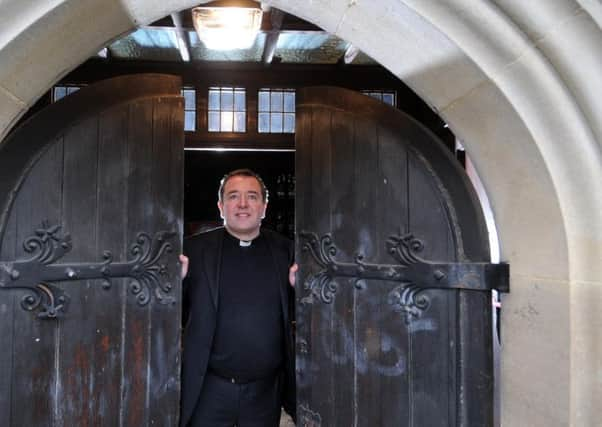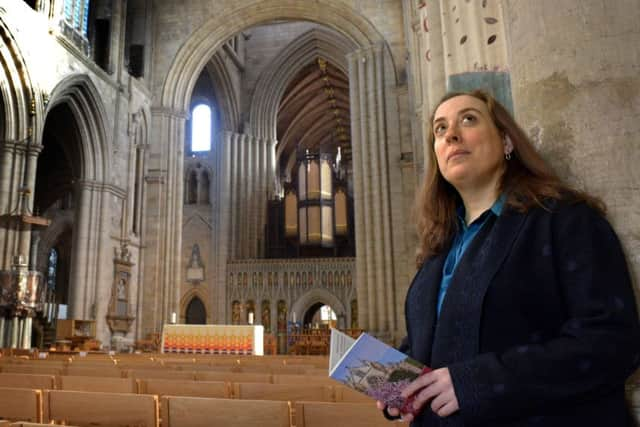Yorkshire's cathedrals in need of divine intervention as running costs spiral


KEITH Jukes, the late Dean of Ripon, walked into the cathedral one day and noticed a young lad lighting candles. He asked him where he was from and the boy said “Scarborough”. When he asked why he’d travelled so far the youngster replied, “because I knew the doors would be open.”
For centuries, our cathedrals have not only provided space for quiet reflection and prayer, they have also offered sanctuary to innumerable people. These architectural jewels on the landscape are woven into the fabric of our nation’s history, but how much longer will they be able to keep their doors open?
Advertisement
Hide AdAdvertisement
Hide AdThe day to day running costs are spiralling upwards and for the vast majority of cathedrals in England trying to balance the books is becoming harder with each passing year. A recent survey found that almost two-thirds of those running England’s Anglican cathedrals are concerned about meeting their costs over the next two years. In Yorkshire, both Ripon and Wakefield said they were “worried” about meeting their running costs and Bradford Cathedral admitted it was “very worried.”


Last year, the Church of England gave £8.3m to these historic buildings but this cash doesn’t cover all of their needs and many cathedrals are constantly on the lookout for new ways of raising much needed funds to keep themselves out of the red.
Some of the country’s bigger, more famous cathedrals charge entry fees to visitors knowing that people will be prepared to pay, but most of the country’s smaller cathedrals, especially those in the North, depend on financial support from the Church Commission, without which many would struggle to balance their books.
Here in Yorkshire we’re blessed with some of the most breathtaking monuments to Medieval craftsmanship you will find anywhere. Ripon Cathedral was founded by St Wilfrid who brought craftsmen from Europe to build a new stone church back in the 7th Century.
Advertisement
Hide AdAdvertisement
Hide AdFrom there it grew into an emblem of Gothic splendour that still dominates the North Yorkshire city’s skyline today. But keeping up such grand appearances doesn’t come cheap, as the cathedral’s operations director Julia Barker explains. “For a Grade I Listed building like this the general upkeep is challenging because it’s not just the cost of the cathedral that you have to take into account, there are several other buildings that make up the estate, too.”


As well as the heating and electricity bills it’s also a constant battle to keep on top of all the repairs. “Like any old building that is getting older the key is to try and solve any problems before they get bigger,” she says.
Ripon’s annual bill for wages, repairs and maintenance stands at just under £1m, which is a lot of money. “We’ve just repaired stonework in the North East corner and that has cost £350,000, which gives you an idea of the upkeep of a building like this.”
Barker says they received a grant from the First World War Commission that helped pay for the work. “Without this we couldn’t do the work because to raise that kind of money would take several years and during that time the building would continue to deteriorate.”
Advertisement
Hide AdAdvertisement
Hide AdRipon attracts just under 100,000 visitors a year - a figure that is on the increase - but while some cathedrals like York Minster charge an entry fee, Ripon is among those that choose not to. “It isn’t something we would want to do and it means we rely on donations from our congregation and from visitors who have been very generous.”
But even with this in addition to central church funding and other grants they have still had to branch out into other areas in order to stay afloat. “As well as all the services we run we host music groups, we have concerts and events and we’ve branched out into Christmas and wedding fairs which have proved very popular.”
Barker accepts, though, that most cathedrals are likely to find it increasingly difficult to meet their costs in the future. “The running costs are going up all the time and it’s becoming harder to find the money. The vast majority of cathedrals are in the same boat because we’re all fishing from the same pond.”
Head down the road to West Yorkshire and it’s a similar story. Like Ripon, Wakefield Cathedral doesn’t charge an entry fee which means it relies chiefly on donations from its congregation and grants from the central church.
Advertisement
Hide AdAdvertisement
Hide AdDean of Wakefield, the Very Rev Jonathan Greener, says Wakefield doesn’t attract as many tourists as some bigger cities. “It’s hard for Wakefield because although The Hepworth has increased the number of visitors that come here we don’t get that many tourists in the city centre.”
Wakefield Cathedral has been undergoing a major £6m renovation projection over the past five years which is due to be completed in May. The Heritage Lottery Fund (HLF) provided around £3.5m in grants towards the overall cost but the remaining £2.5m had to be raised by the cathedral itself, through donations and various other grants. This is on top of the £1,500 it costs each day to keep the building running.
There is an assumption among a lot of people that cathedrals are sitting on a big pile of money, which isn’t the case. At the same time there’s an expectation they will provide certain services.
“People expect to hear excellent music and that costs money because you have to pay for professional musicians and they expect you to be open all the time and that costs money, too,” says Dean Greener. “We are committed to being here for the community but you can’t just leave your door open all the time, you need to have staff.”
Advertisement
Hide AdAdvertisement
Hide AdHe says his role, like that of cathedrals in modern Britain, has changed. “The dean in any cathedral spends a lot of time fundraising now. The dilemma you face is between using the building for commercial endeavour and keeping it as a place of prayer and worship.
“You walk a tightrope between selling your soul and not being able to run the building, and between positive and negative on the balance sheet - and both require careful management.”
It’s not just spiritual guidance that religious leaders are expected to provide, they have to be able to demonstrate business acumen too, with business training courses now available to members of the clergy. “You’re no longer simply a pastor, you’re also running a business.”
Even so, the dean believes there is a renewed appreciation in this country for cathedrals, which are not only pillars of religious life but remain at the heart of our communities.
Advertisement
Hide AdAdvertisement
Hide Ad“More than a quarter of the adult population visit a cathedral each year and that shows they’re an essential part of what makes Britain, and I believe they do have a future... we just need to find new ways of being enterprising and creative.”